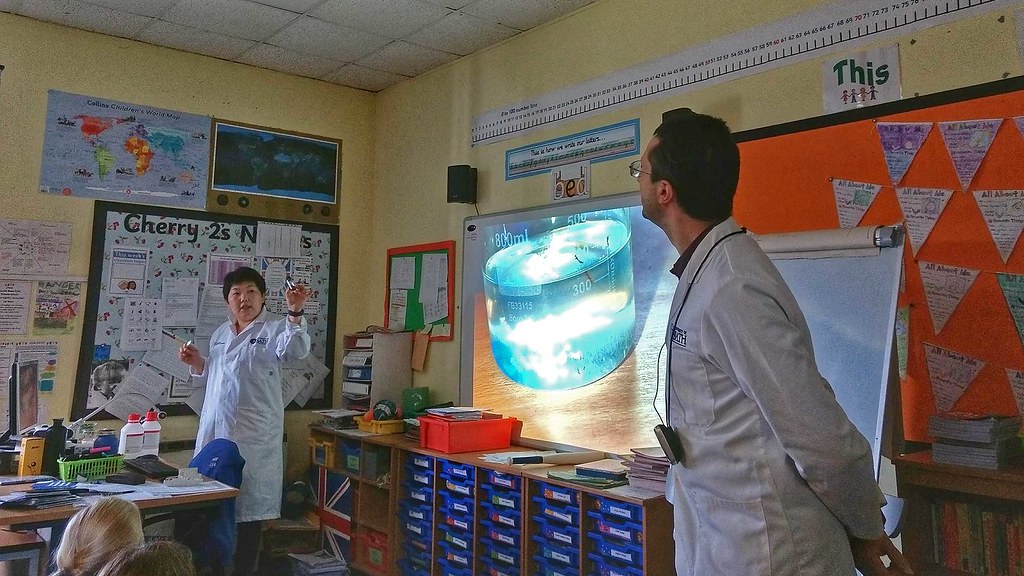The scientists, from the faculties of Science and Engineering, showed the Year 3 class at Combe Down School how to grow a crystal garden by adding metal salts to a silicate solution, “isinglass”. Once the metals start reacting with silicate, they grow as trees and make intricate shapes with different colours.
What do scientists do all day?
Dr Stephen A Wells (Chemical Engineering), Dr Hamide Khanbareh (Mechanical Engineering) and Dr Asel Sartbaeva (Chemistry) also talked with pupils about what scientists do, to see what perception pupils have about scientists and the work they do at the university.
Dr Sartbaeva, who is working on a way to make vaccines safer, said: “It was interesting to hear what such young pupils think about scientists. Already by 7-8 years, the assumption is that we all just mix chemicals in the laboratories. We wanted to bring other dimensions of our work and talked about computer simulations and working on big engineering structures, to show that there are many aspects to what scientists actually do.
“We then talked about timescales and how long it takes for crystal to grow in nature. But of course we do not have millions of years to be able to study crystals, so we need to speed those processes up in the laboratories. We then performed the experiments where we grew crystals in front of the pupils, so that they can see that crystals can be grown much faster.
“Another aspect we wanted to bring into this activity is that the typical scientist is not necessarily a man with glasses and mad hair. Having two women in our group reinforced the message that science is for women too!”
From crystal gardens to the space shuttle
Dr Hamideh Khanbareh, who works on energy materials, said: “They were brilliant pupils, all excited, engaged, very curious and surprisingly well informed about science. We told them about research in mechanical engineering and how that links to materials chemistry and why we need to make novel materials. We had an extremely positive response and the students made connections with respect to robots, planes and cars. Talking about the link between the crystals we grew today and high temperature ceramics for space shuttles thermal protection created a great deal of interest. We’re grateful to the teachers and I’m proud to be a female engineer STEMEnist.”
Dr Stephen Wells, who works on computer simulations of proteins and porous materials, said “The pupils were such a great audience – very engaged, asking plenty of questions. We got a wonderful, firework-show response from them when the fastest-growing crystals took off in a matter of seconds. Through questions and answers we were able to discuss how the chemistry we showed them – metal salts and silicates – is connected to many areas of science, from the biology of blood, bones and teeth to the construction of rocket engines. We're very grateful to the teachers and pupils for giving us this opportunity and being so welcoming.”
If you'd like to invite our scientists to come and deliver a workshop at your school, please get in touch with us via the contact details at the side.
